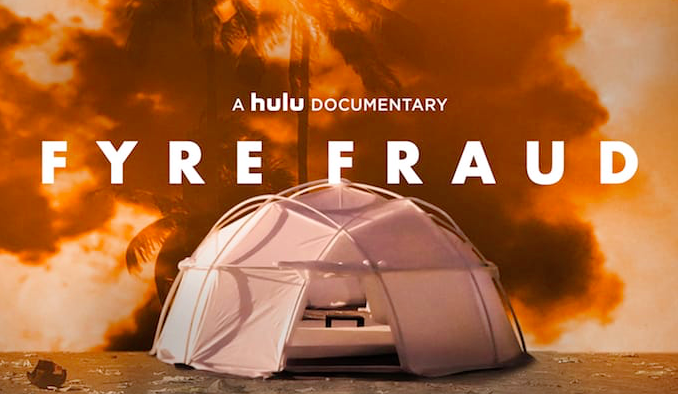Wealth. Models. Music. A beach paradise. Fraud. This month, America’s media fascination with the infamous “Fyre Festival” of 2017 was brought back into public interest due to the release of two new documentaries on the subject. For some background, the Fyre festival was a music festival planned to occur on April 28, 2017. The festival was supposed to raise public interest in a talent booking app, called Fyre, which was described as the tinder of booking celebrity appearances. The festival was marketed as a luxury vacation in the Bahamas with an amazing music festival added in; however, when the “festival” occurred, it became a massive disaster.
On Jan. 12, Hulu released a documentary titled “Fyre Fraud” and, six days later on Jan. 18, Netflix released a documentary titled “Fyre: The Greatest Party That Never Happened.” Both of these movies have gained massive public and media attention, which was what convinced me to watch them in the first place. I couldn’t go through the day without someone mentioning the docs to me, excitedly asking: “Have you seen the Fyre festival thing yet?” Now, even as someone who loves a good documentary, I was slightly uninterested before I watched these two as the Fyre festival story didn’t really fascinate me as it happened, and I didn’t believe these would change that disinterest. I was shocked by how interested I became with both documentaries and the narrative they told.
The story they tell is an obviously intricate one due to the sheer number of factors that went into the failure of the festival and the varying accounts received from different people, including the media company that ran the marketing for the event, the people who attended the festival and the people in charge of the event planning. Both documentaries have great interviews, which is part of what makes them so fascinating. The facts are that the festival was planned by entrepreneur Billy McFarland and rapper Ja Rule. According to the documentaries, the festival failed due to many things, not limited to a lack of funds and the festival not delivering on marketing claims. The marketing campaign promised a beautiful beach paradise and luxury accommodations in beautiful tents and villas. What was delivered was FEMA hurricane tents with no air conditioning and not enough room for all of the guests. When the festival date arrived, the conditions and backlash became so bad that the festival was called off entirely one day into what was supposed to be a three-day festival.
After taking in both the Netflix and Hulu versions of the events that happened before, during and after the festival, I have to say that I don’t know which I liked more. Both documentaries have different takes on the events as Hulu interviews Billy McFarland, who gives his version of why the festival went wrong and Netflix’s version is produced by Jerry Media, a media company hired to run the marketing for the event. This colors the story that the movies tell. I thought the Netflix version seemed sincere until I saw the Hulu one and it made me question what I originally thought was true. Both get about 4 stars from me and are super interesting to discuss and watch. People who followed the story of the festival on the news should watch these movies because it goes into the details of what went into the planning of the festival and how it became such a disaster. In any case, I recommend you watch both for yourself and decide which one you think is more honest.


Leave a Reply